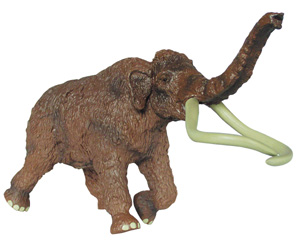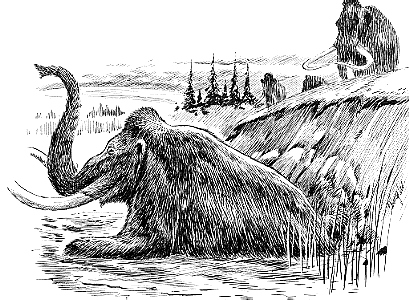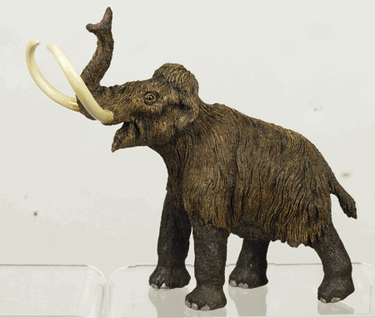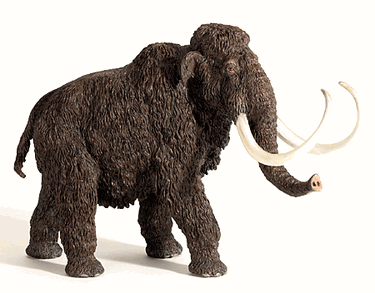
June 10, 2008

Andrea Thompson, a senior writer at Live Science has written an interesting article on a new subspecies discovery regarding woolly mammoths.
Two genetically distinct groups of woolly mammoths once roamed northern Siberia, a new study suggests, with one group dying out long before humans showed up.
The finding suggests humans were not the only reason for the beasts’ demise, as some have suggested.
Scientists had long thought that woolly mammoths were one large homogeneous group, but an international group of scientists studied the mitochondrial DNA – the DNA in the genes of the mitochondria structures within cells – to paint a new picture of the ancient pachyderms.

They extracted the DNA from frozen hair samples obtained from individual woolly mammoth specimens, found throughout a wide swath of northern Siberia. They compared 18 complete genomes of mitochondrial DNA and found evidence of two genetically distinct clades, or groups of the elephant-like beasts.
The population was split into two groups, then one of the groups died out 45,000 years ago, long before the first humans began to appear in the region. This discovery is particularly interesting because it rules out human hunting as a contributing factor, leaving climate change and disease as the most probably causes of extinction. ~ Study team leader Stephan C. Schuster of Penn State University.
The research, funded by Penn State, Roche Applied Science and a private sponsor, indicates that the diversity of the two woolly mammoth groups was as low centuries ago as it is now in Asian elephants living in southern India, which has been suggested as contributing to the problem of maintaining thriving groups of Asian elephants, Schuster said.

Schuster and his team also found that each group had a low genetic diversity – in other words, individuals within each of the woolly mammoth groups were very closely related to one another.
This low genetic divergence is surprising because the woolly mammoth had an extraordinarily wide range: from Western Europe, to the Bering Strait in Siberia, to North America….[The low genetic diversity] may have degraded the biological fitness of these animals in a time of changing environments and other challenges. Study team member Webb Miller of Penn State.
In their paper, which appears in the June 9, 2008, issue of the journal Proceedings of the National Academy of Sciences, the researchers note that the smaller clade appears to have died out before the larger clade, possibly as a result of genetic drift, or the frequencies with which certain forms of a gene are passed to later generations, purely as a matter of chance. Because the population had such a small range, the lack of diversity could have left them vulnerable to a sudden change in their environment.

About Loren Coleman
Loren Coleman is one of the world’s leading cryptozoologists, some say “the” leading living cryptozoologist. Certainly, he is acknowledged as the current living American researcher and writer who has most popularized cryptozoology in the late 20th and early 21st centuries.
Starting his fieldwork and investigations in 1960, after traveling and trekking extensively in pursuit of cryptozoological mysteries, Coleman began writing to share his experiences in 1969. An honorary member of Ivan T. Sanderson’s Society for the Investigation of the Unexplained in the 1970s, Coleman has been bestowed with similar honorary memberships of the North Idaho College Cryptozoology Club in 1983, and in subsequent years, that of the British Columbia Scientific Cryptozoology Club, CryptoSafari International, and other international organizations. He was also a Life Member and Benefactor of the International Society of Cryptozoology (now-defunct).
Loren Coleman’s daily blog, as a member of the Cryptomundo Team, served as an ongoing avenue of communication for the ever-growing body of cryptozoo news from 2005 through 2013. He returned as an infrequent contributor beginning Halloween week of 2015.
Coleman is the founder in 2003, and current director of the International Cryptozoology Museum in Portland, Maine.
Filed under Breaking News, Cryptotourism, CryptoZoo News, Cryptozoologists, Cryptozoology, Forensic Science, Fossil Finds, Megafauna, New Species